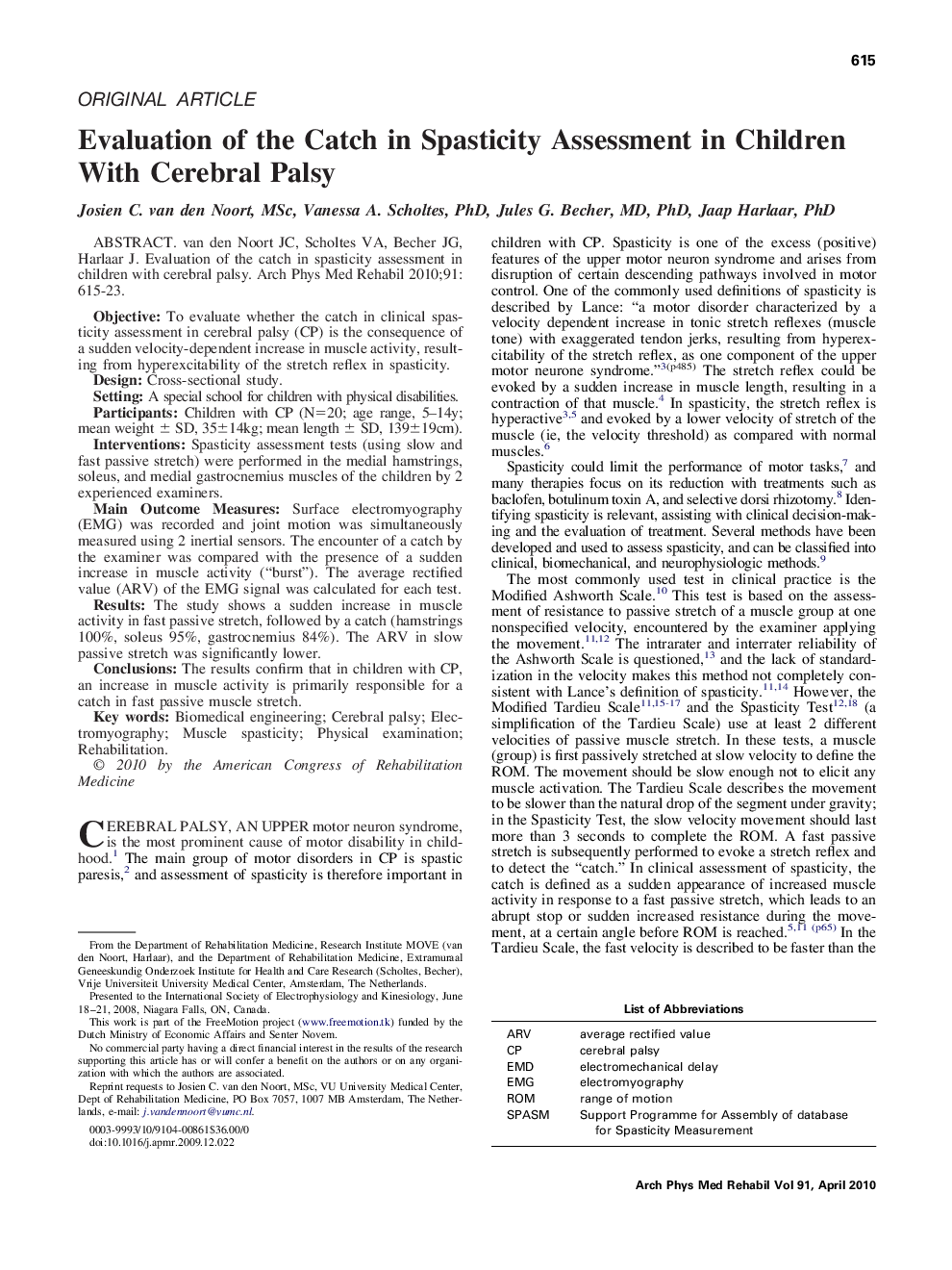| کد مقاله | کد نشریه | سال انتشار | مقاله انگلیسی | نسخه تمام متن |
|---|---|---|---|---|
| 3450833 | 1595754 | 2010 | 9 صفحه PDF | دانلود رایگان |

van den Noort JC, Scholtes VA, Becher JG, Harlaar J. Evaluation of the catch in spasticity assessment in children with cerebral palsy.ObjectiveTo evaluate whether the catch in clinical spasticity assessment in cerebral palsy (CP) is the consequence of a sudden velocity-dependent increase in muscle activity, resulting from hyperexcitability of the stretch reflex in spasticity.DesignCross-sectional study.SettingA special school for children with physical disabilities.ParticipantsChildren with CP (N=20; age range, 5–14y; mean weight ± SD, 35±14kg; mean length ± SD, 139±19cm).InterventionsSpasticity assessment tests (using slow and fast passive stretch) were performed in the medial hamstrings, soleus, and medial gastrocnemius muscles of the children by 2 experienced examiners.Main Outcome MeasuresSurface electromyography (EMG) was recorded and joint motion was simultaneously measured using 2 inertial sensors. The encounter of a catch by the examiner was compared with the presence of a sudden increase in muscle activity (“burst”). The average rectified value (ARV) of the EMG signal was calculated for each test.ResultsThe study shows a sudden increase in muscle activity in fast passive stretch, followed by a catch (hamstrings 100%, soleus 95%, gastrocnemius 84%). The ARV in slow passive stretch was significantly lower.ConclusionsThe results confirm that in children with CP, an increase in muscle activity is primarily responsible for a catch in fast passive muscle stretch.
Journal: Archives of Physical Medicine and Rehabilitation - Volume 91, Issue 4, April 2010, Pages 615–623